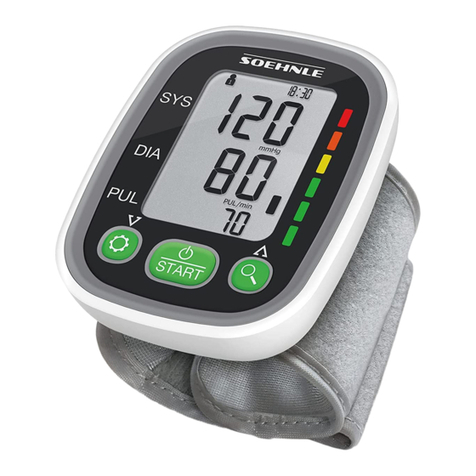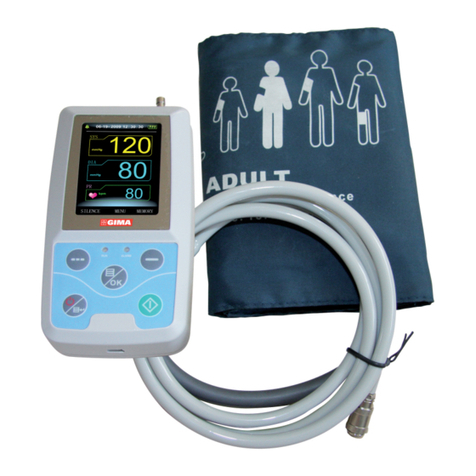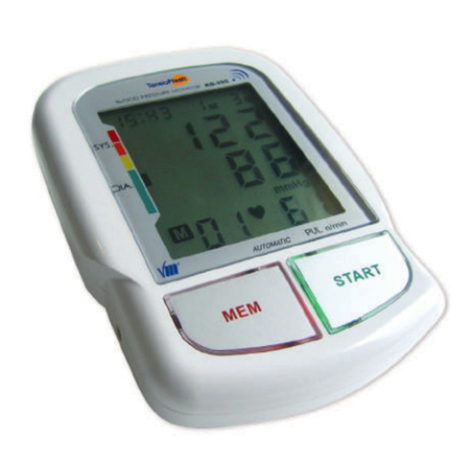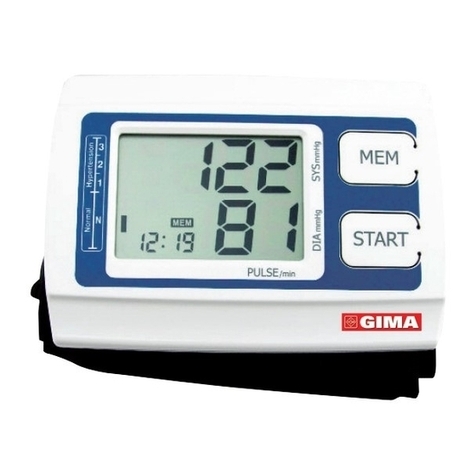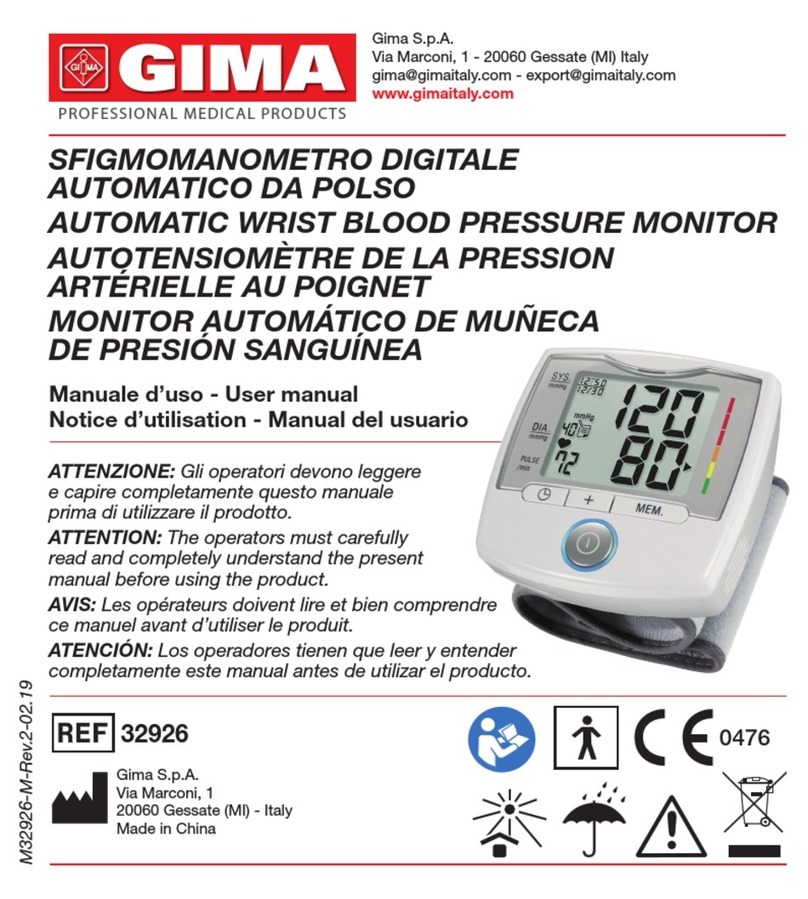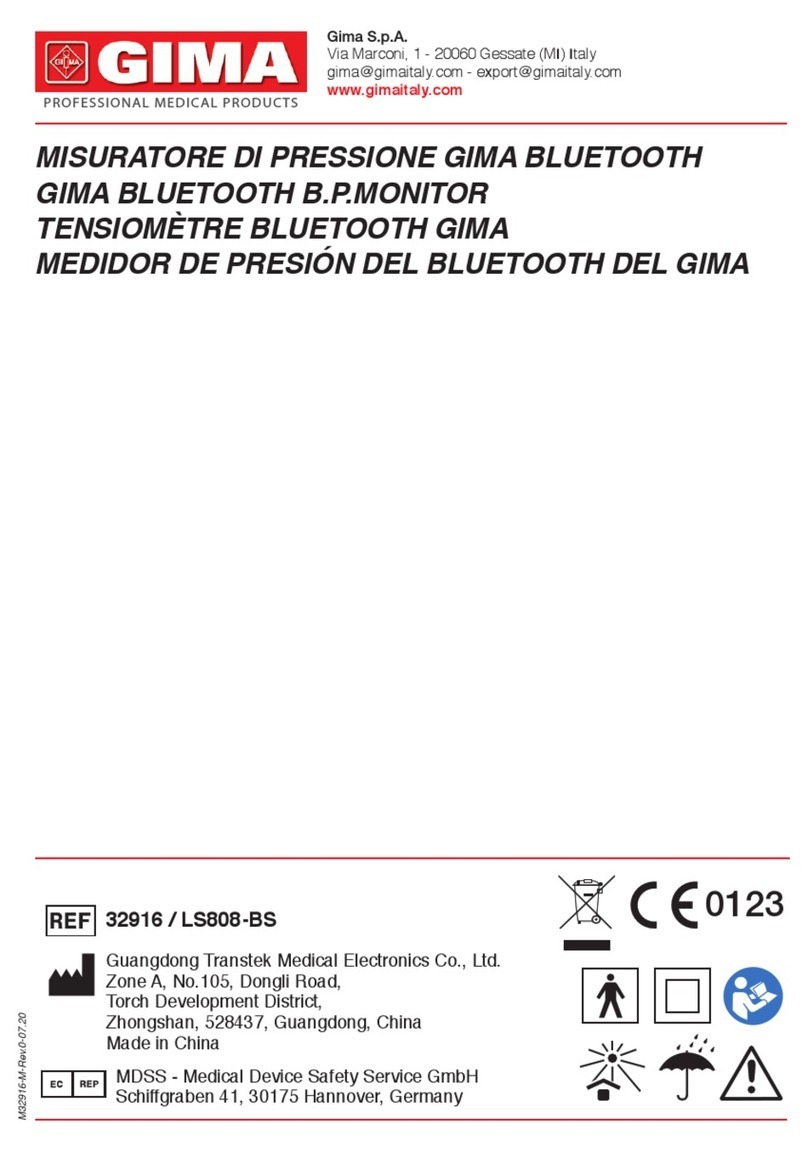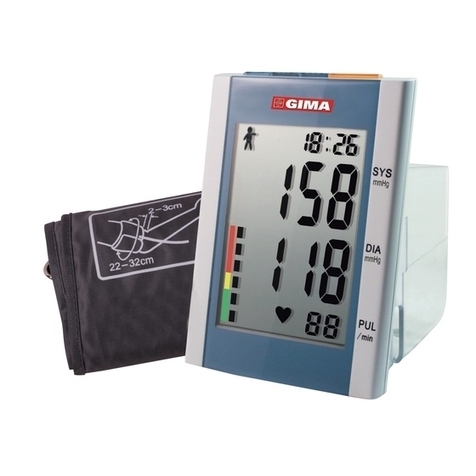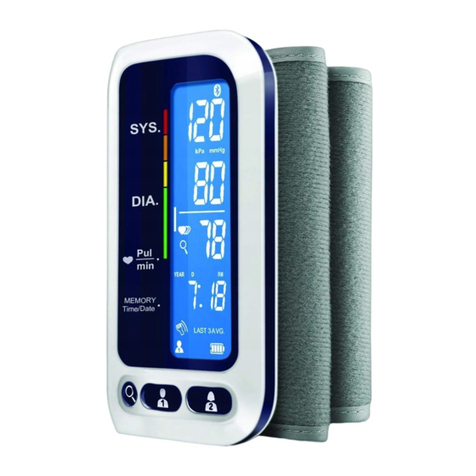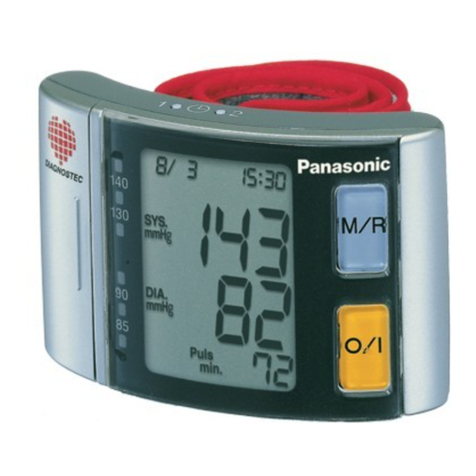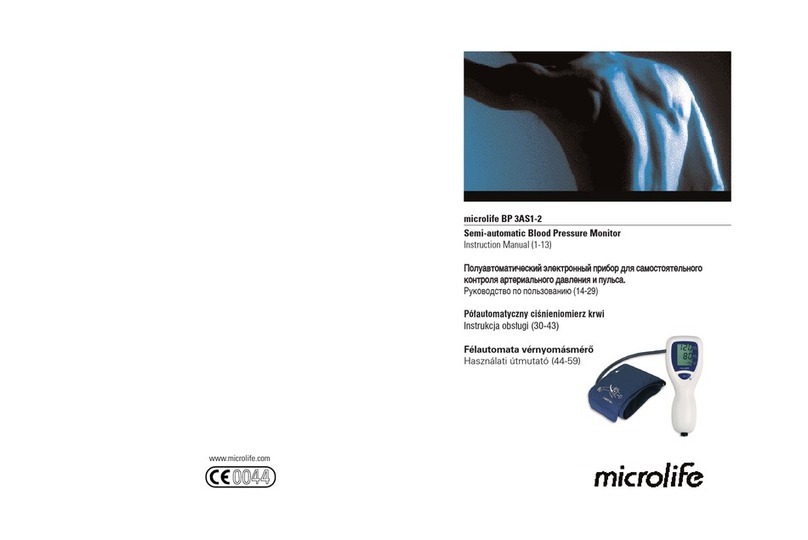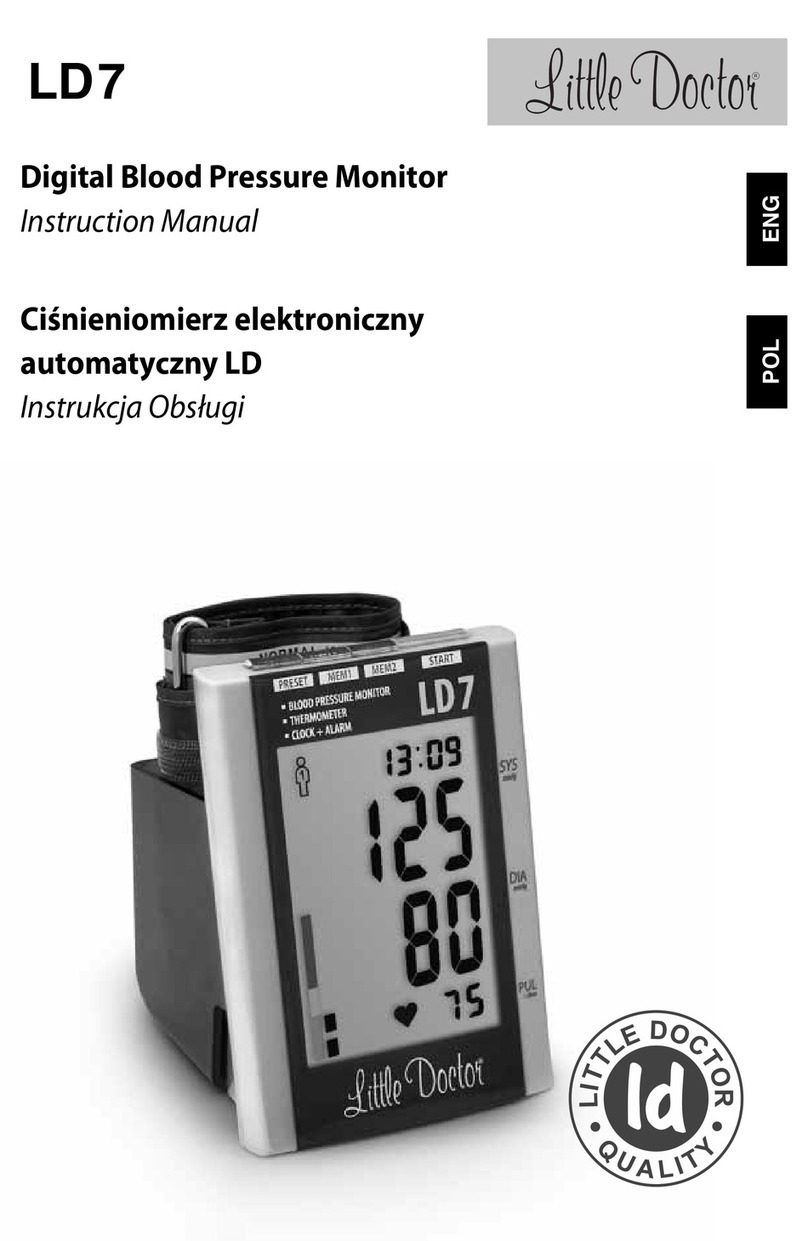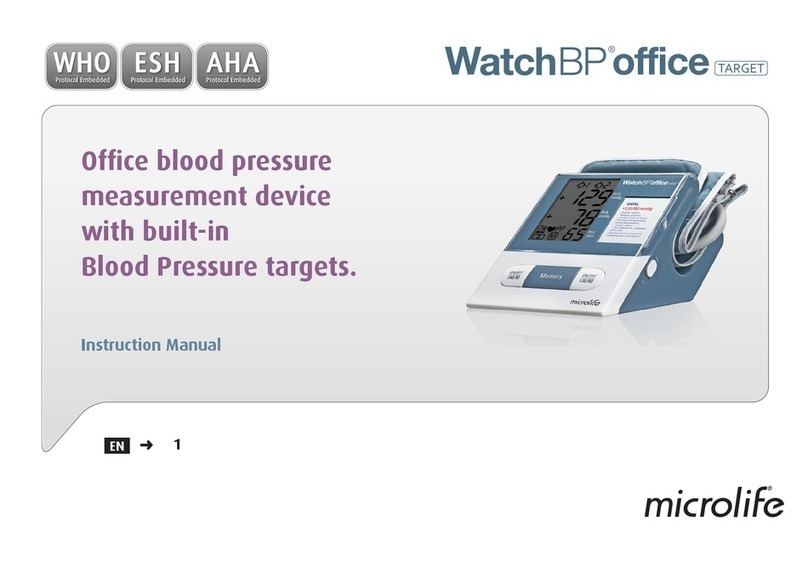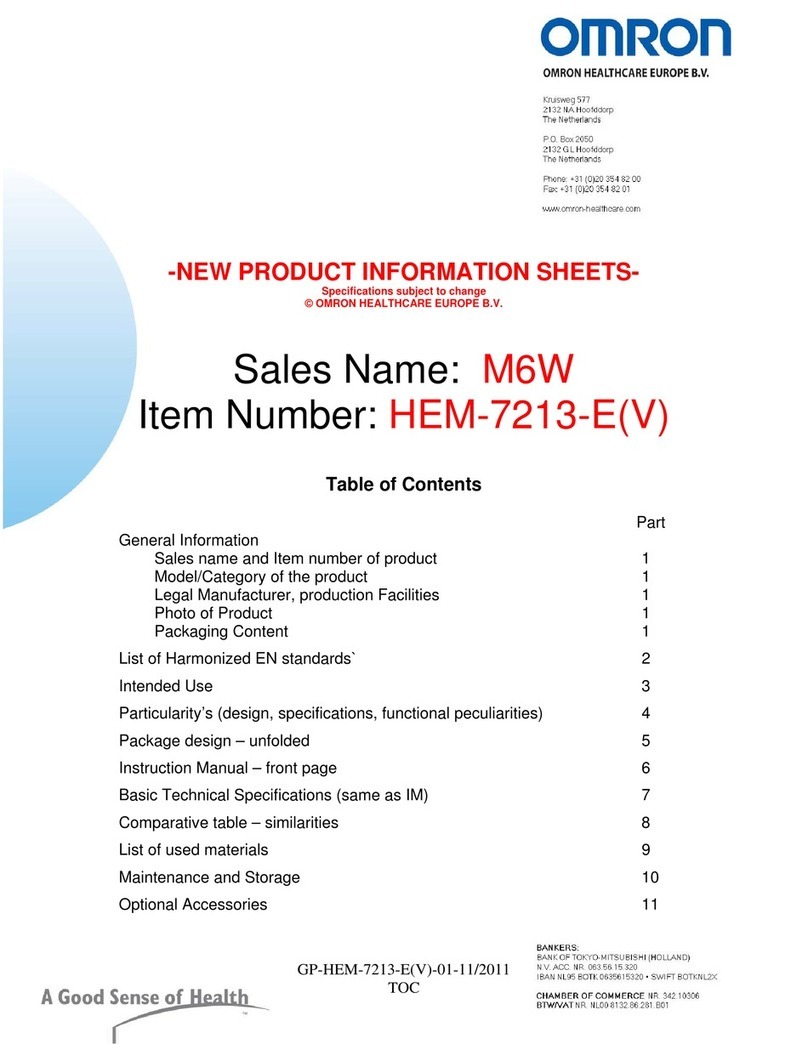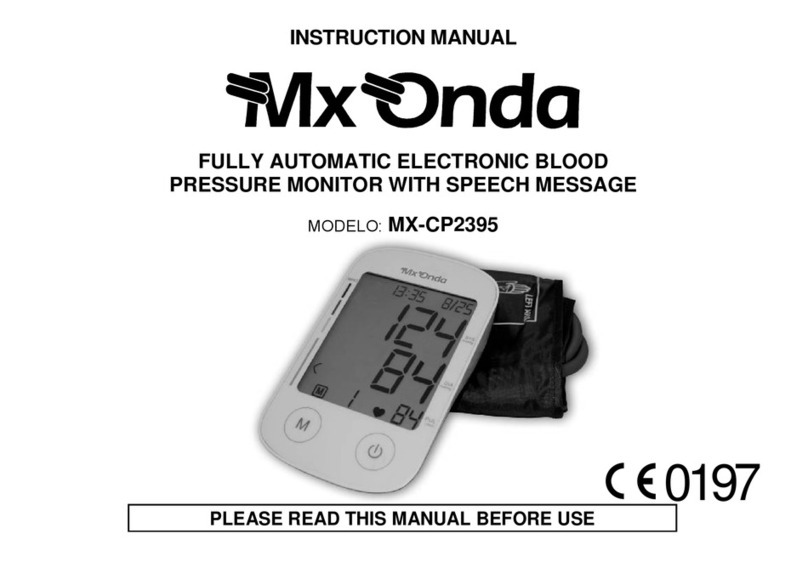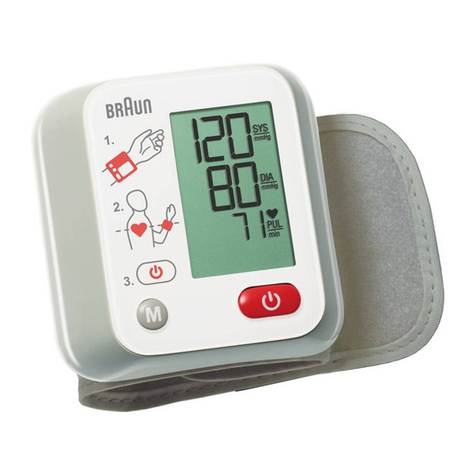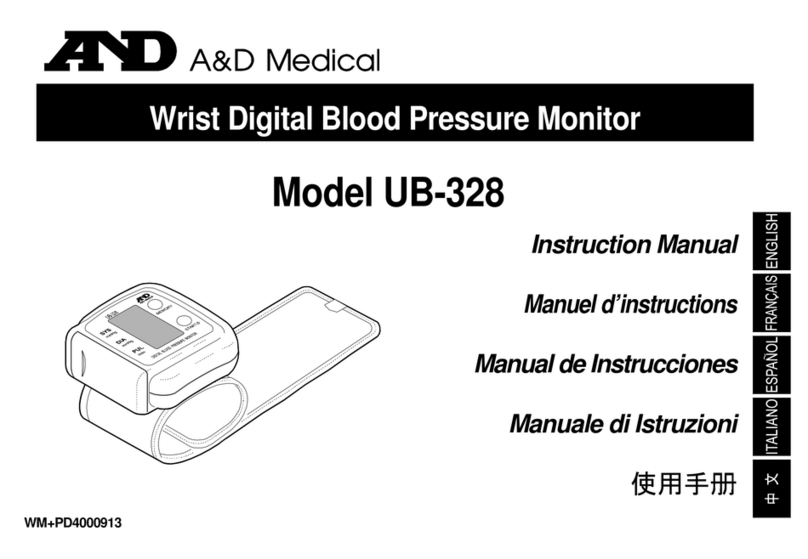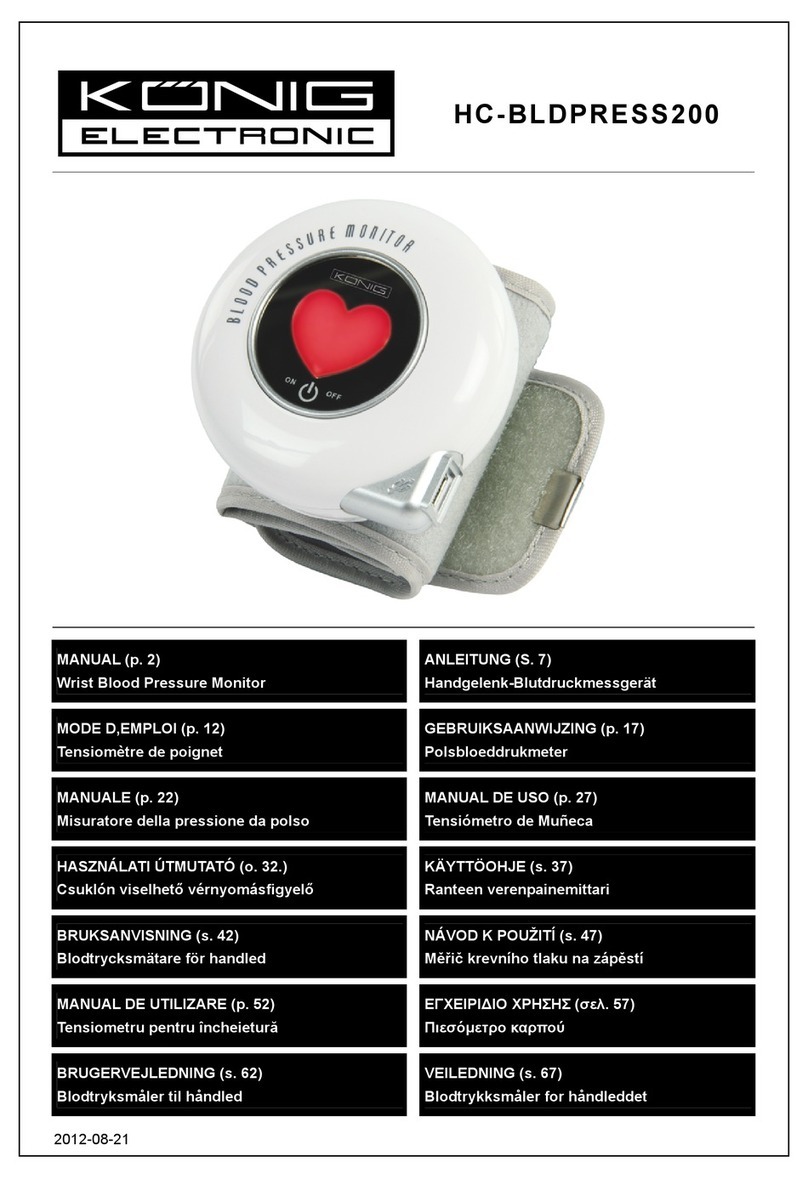
24
• Do not move or shake the device during a measurement. Please keep quite and do not
talk at the same time.
• Keep in mind that blood pressure naturally varies from time to time throughout the day
and is affected by lots of different factors such as stress, eating, smoking, alcohol con-
sumption, medication, and physical activity, etc.
Normally the blood pressure rises while at work and is at its lowest during sleeping
period.
• Blood pressure measurements should be interpreted by a physician or a trained health
professional who is familiar with your medical history. Using the unit and recording the
results regularly for your physician to interpret, you will keep your physician informed of
the continuing changes in your blood pressure.
• If you have one of the circulatory problems as arteriosclerosis, diabetes, liver disease,
kidney disease, severe hypertension, peripheral circulation.., please consult your health-
care professional before using the device.
• This product is not suitable for people with arrhythmias and pregnant women.
• Blood pressure measurements taken with this device are equivalent to those obtained
by a trained observer using the cuff / stethoscope auscultation method and are within
the accuracy limits prescribed by the Standard of EN 1060-4.
Attention!
1. Do not use the device on infants, children, or those who cannot express their own
intention.
2. The device is equipped with sensitive electronic components. While measuring, avoid
strong electrical or electromagnetic elds, e.g. mobile phones, microwave ovens, etc;
or it may lead to temporary reading error or inaccuracy.
3. To avoid accidental strangulation, keep this product away from children and do not
drape tube around neck.
4. Over high frequency measurements may result in blood ow interference, which is like-
ly to cause uncomfortable sensations, such as partial subcutaneous hemorrhage, or
temporary numbness to your arm. In general, these symptoms should not last long.
However, if you do not recover in time, please seek your medical practitioners for help.
ENGLISH


